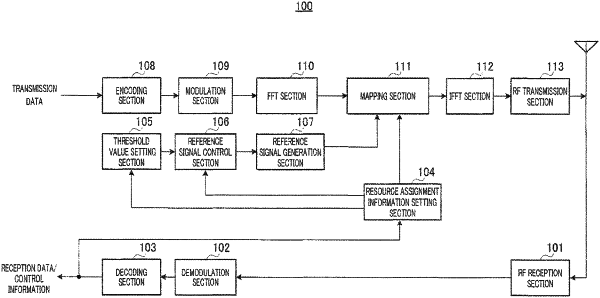| CPC H04L 5/0048 (2013.01) [H04L 25/0226 (2013.01); H04L 27/2613 (2013.01); H04L 25/022 (2013.01); H04L 25/03159 (2013.01)] | 14 Claims |

|
1. An integrated circuit to control a process, the process comprising:
receiving, from a base station, allocation information indicating one or more sets of consecutive frequency resources allocated in each of one or more uplink component carriers, which include a first component carrier and a second component carrier, the first component carrier and the second component carrier having different frequencies, and more than one set of consecutive frequency resources, of said one or more sets of consecutive frequency resources, being spaced apart from each other along a frequency axis; and
performing, based on the received allocation information and a number of said one or more uplink component carriers, one operation selected from two operations including:
a first operation of generating plural uplink reference signal sequences including a first sequence and a second sequence, mapping the generated first sequence in said one or more sets of consecutive frequency resources allocated in the first component carrier, mapping the generated second sequence in said one or more sets of consecutive frequency resources allocated in the second component carrier, and controlling transmission of the mapped first sequence and the mapped second sequence; and
a second operation of generating one uplink reference signal sequence, mapping the generated one uplink reference signal sequence in said more than one set of consecutive frequency resources allocated in said one uplink component carrier by dividing the generated one uplink reference signal sequence into more subsequences correspondingly to said more than one set of consecutive frequency resources, respectively, and controlling transmission of the mapped one uplink reference signal sequence.
|